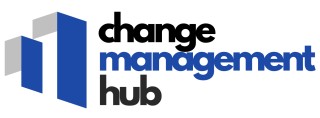
Understanding the Importance of Clarity in Change Management
The Role of Clarity in Navigating Change
In the realm of project management, clarity is not just a buzzword; it's a critical component that can make or break the success of a project. Whether you're dealing with a small team or managing a large portfolio, maintaining clarity ensures that everyone involved understands the strategic objectives and the steps required to achieve them. This is particularly vital in change management, where the landscape is continuously evolving, and the ability to adapt is crucial.
Clarity in project management involves more than just clear communication. It encompasses the entire process of planning, executing, and monitoring projects. With tools like clarity software and project portfolio management (PPM), organizations can streamline their operations and improve decision-making processes. These tools offer data-driven insights that support business objectives and enhance resource management, ultimately leading to better project outcomes.
For those looking to delve deeper into the field, exploring career opportunities in change management can provide valuable insights into how clarity can be achieved and maintained. Understanding the intricacies of project management and the role of clarity can be a game-changer for professionals aiming to excel in this dynamic field. For more information on career paths and opportunities, you can explore career opportunities in change management.
As we explore the challenges and strategies in the following sections, keep in mind that clarity is the foundation upon which successful change management is built. It not only facilitates effective communication but also ensures that all team members are aligned with the project's goals and objectives.
Identifying Challenges in Maintaining Clarity
Common Challenges in Maintaining Transparency
In project management, ensuring clarity can be a daunting task due to a myriad of challenges. These hurdles often exacerbate the complexity of managing projects and can obscure the intended outcomes.
Integration of Diverse Tools and Software
One major obstacle is the integration of various tools and project management software, such as clarity software or PPM software. Often, different departments within a company use distinct systems, making it challenging to ensure synchronized data flow. Strategic support is crucial here, requiring businesses to adopt best practices in portfolio management to achieve seamless synergy between their applications. Utilizing expert guidance, like those provided by rego consulting, can help optimize this integration.
Miscommunication in Team Dynamic
Effective communication within teams is vital for maintaining clarity in project management. Miscommunication often stems from unclear roles and responsibilities, which can result in inefficiencies and errors. Training and utilizing expert guides can significantly bolster team understanding and collaboration, reducing the risk of misunderstandings affecting project clarity and success.
Complexity in Decision-Making Processes
The decision-making process can further muddle clarity, especially when engaged with large-scale or agile projects. Complex project portfolios require decisions to be made swiftly and accurately, often under pressure. To navigate these challenges, business applications that provide real-time data support are invaluable in aiding teams to make informed decisions, ultimately freeing up precious time and resources.
Managing Business and Strategic Support
Finally, balancing the operational and strategic facets of a business presents its unique set of challenges. Projects driven by clear objectives and supported by managed services from entities like rego consulting can better align strategic goals with operational practices. To explore more about strategic support, visit this insightful resource.
Strategies for Enhancing Clarity in Project Management
Enhancing Clarity through Proactive Strategies
Achieving clarity in project management, particularly during times of change, requires a toolkit of strategies. These strategies are designed to effectively harness team effort and resources toward the successful execution of business objectives. Leveraging best practices from clarity PPM and other management methodologies can provide the edge needed for clear project vision and execution.
- Engage Stakeholders Early: To enhance clarity, it’s crucial to involve all stakeholders from the outset. This means understanding and documenting their needs and expectations, which can then be aligned with the project objectives. Early engagement also allows for the identification of potential conflicts and the development of counter-strategies.
- Embrace the Right Tools: Utilizing management software like clarity software paves the way for better project visualization and accountability. These tools, paired with expert guidance from rego consulting, can aid in efficiently managing resources and tracking project progress.
- Tailor Agile Practices: PPM agile principles can be adapted to foster flexibility and responsiveness. This involves iterative planning and feedback cycles, enabling teams to adapt quickly to new challenges without losing sight of the end-goal.
- Empower Teams through Training: Continued learning and development should be prioritized. Providing teams with access to training through resources like rego university equips them with the knowledge to navigate and implement change effectively, enhancing their problem-solving capabilities.
- Portfolio Management Framework: Implementing a robust project portfolio management framework aids in prioritizing projects based on strategic value and resource availability. Support from managed services providers and consulting corporations can streamline this process, providing clarity and direction.
The strategies you adopt should be aligned with your specific project needs, business applications, and organizational culture. For a deeper understanding of strategic framework applications, you might consider exploring more about the Toyota Production System diagram, which highlights efficiency and clear operational flows in project management.
Effective Communication Techniques
Power of Communication in Project Clarity
In the realm of project management, effective communication serves as the backbone for achieving clarity. When it comes to navigating change, project teams must prioritize strategic communication techniques to ensure all stakeholders and team members remain aligned and informed. Without such clarity, even the most well-planned projects risk veering off course. A pivotal strategy is to establish communication channels tailored to the needs of the team and the project. This involves selecting suitable platforms, such as clarity software and other management tools that facilitate real-time updates and data sharing. Utilizing such tools enables teams to manage their portfolios efficiently and supports rego consulting processes, which help enhance the overall strategic direction of projects. For businesses utilizing project portfolio management (PPM) methodologies, integrating communication best practices becomes even more crucial. Teams often find that using PPM agile approaches—in which the flexibility of agile is combined with the structure of PPM—can foster better understanding and clarity. By applying PPM agile, organizations can adjust swiftly to changes while maintaining a strategic focus on their objectives. Regular training sessions can equip team members with the necessary skills to communicate effectively, fostering clarity across various levels of management. Institutions like rego university provide comprehensive training programs tailored to the specific needs of the business, ensuring that all team members can articulate their roles and responsibilities clearly. Moreover, feedback loops provide valuable insights, enhancing decision-making processes within teams. Encouraging open, honest feedback can ensure that clarity is maintained, allowing for the quick identification of potential obstacles and empowering teams to address them immediately. This collaborative approach is often reflected in success stories across industries, demonstrating how clear communication can indeed make or break a project. Adopting these communication techniques not only lays a foundation for clarity in project management but also sets businesses up for long-term success by fostering a culture of transparency and collaboration. Through comprehensive training, strategic use of management software, and effective feedback systems, organizations can enhance clarity in their project operations, ultimately supporting their broader business objectives.Case Studies: Clarity in Action
Real-World Examples of Clarity in Project Management
In the realm of project management, there are compelling case studies that shed light on the significance of clarity. These real-world examples demonstrate how strategic clarity ppm software, strong communication, and agile strategies can lead to tangible success. By reflecting on these instances, teams can learn how to effectively apply best practices to their own projects.Portfolio Management Success
A leading corporation recently undertook a massive project portfolio transition using clarity ppm software. Initially, the team faced challenges due to the sheer volume of data and lack of alignment. However, by focusing on clarity and using expert guides from consulting corporations, they identified overlapping efforts and streamlined their workflows. This strategic management of resources resulted in reduced project redundancy and improved alignment with business goals.Agile Transformation in Technology Projects
A tech company pursuing agile methodologies found success through advanced training in project portfolio management. Their clarity rally events provided opportunities for teams to engage and refine their agile approaches. Managed support services from rego consulting played a critical role, offering strategic support that empowered teams to adapt and innovate. The transformation resulted in increased efficiency and decreased time-to-market for new services.An Innovative Approach to Resource Management
In another scenario, a business utilized rego university for extensive training to overcome challenges in resource management. By adopting clarity software, the team improved their decision-making processes. This not only enhanced the management clarity but also fostered a culture of informed decision-making within the organization. As a result, the company saw a notable uptick in project success rates and employee satisfaction. By examining these success stories, businesses can glean vital insights on how strategic clarity and proper management tools can bolster their project outcomes. These examples underscore the necessity of continuous learning and adaptation tailored to each organization’s unique needs.Measuring the Impact of Clarity on Project Success
Evaluating the Role of Clarity in Achieving Project Goals
In the fast-paced world of project management, keeping a clear focus on objectives is crucial. Projects, especially those involving large teams and complex portfolios, demand clarity in both direction and execution. Measuring the impact of clarity is essential to understanding its effect on overall project success. Without clarity, even the best-laid plans can go astray. Clarity helps teams align their efforts with the strategic goals of the business, ensuring that resources are efficiently utilized and projects stay on track. When clarity is prioritized, resources are managed effectively, and project timelines are adhered to meticulously. This alignment becomes the foundation upon which successful project outcomes are built. Here are some metrics and indicators that can be used to measure the impact of clarity on project success:- Stakeholder Satisfaction: Clear objectives and communication can be seen in how satisfied stakeholders are with the project's progress and outcomes. Regular feedback loops and support from consulting services like Rego Consulting can bolster this satisfaction.
- Project Schedule Adherence: Clarity ppm ensures time is efficiently used, with fewer delays and extensions, indicating successful management of the project schedule.
- Resource Utilization: By providing clarity in resource allocation, projects minimize waste, demonstrating effective portfolio management.
- Decision-Making Efficacy: Clear communication and well-understood objectives enhance decision-making processes, resulting in streamlined work and quicker problem resolution.
- Adaptability to Change: In an agile ppm environment, clarity supports teams in adapting to changes swiftly and effectively, a critical factor in maintaining project momentum.













